

Guidelines for submitting articles to San Pedro del Pinatar Today
Hello, and thank you for choosing San Pedro del Pinatar.Today to publicise your organisation’s info or event.
San Pedro del Pinatar Today is a website set up by Murcia Today specifically for residents of the urbanisation in Southwest Murcia, providing news and information on what’s happening in the local area, which is the largest English-speaking expat area in the Region of Murcia.
When submitting text to be included on San Pedro del Pinatar Today, please abide by the following guidelines so we can upload your article as swiftly as possible:
Send an email to editor@spaintodayonline.com or contact@murciatoday.com
Attach the information in a Word Document or Google Doc
Include all relevant points, including:
Who is the organisation running the event?
Where is it happening?
When?
How much does it cost?
Is it necessary to book beforehand, or can people just show up on the day?
…but try not to exceed 300 words
Also attach a photo to illustrate your article, no more than 100kb

7 reasons to visit the Altiplano in the north of Murcia
A harder job would be to name reasons NOT to visit Yecla and Jumilla!
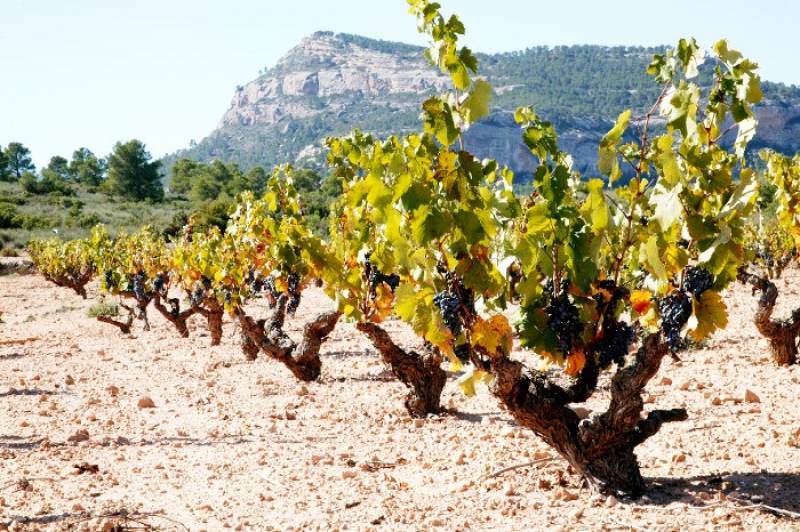 If you’re one of those whose knowledge of the Region of Murcia is limited to the beaches of the Mediterranean and the Mar Menor, couple of local watering holes or restaurants, the airport in Corvera and perhaps the cities of Cartagena and Murcia, it’s time to broaden your horizons and discover a whole different world which lies a little further inland!
If you’re one of those whose knowledge of the Region of Murcia is limited to the beaches of the Mediterranean and the Mar Menor, couple of local watering holes or restaurants, the airport in Corvera and perhaps the cities of Cartagena and Murcia, it’s time to broaden your horizons and discover a whole different world which lies a little further inland!
This is a world where palm trees are replaced by oaks and pines, where the flat vegetable crop fields of the Campo de Cartagena give way to cereal crops, mountains and forests, and where the tomato plantations are a forgotten as you drive or stroll through countless hectares of vineyards.
This is the Altiplano, which is its simplest terms is the name given to the high plateau which is home to the two municipalities of Jumilla and Yecla. You could easily forgiven for imagining that this is a small area – only two municipalities, after all? – but don’t be fooled: Jumilla is the 10th largest municipality in Spain, occupying an area of almost 1,000 square kilometres, while Yecla is not so far behind at over 600 km2!
And the whole area FEELS big. The sky is somehow wider, the vast plains sometimes seem to stretch out towards the horizon, the mountains are majestic and the swathes of vineyards are a sure sign that this is true rural Spain, where some of the country's finest wine is produced.
And so, inevitably, the first recommendation when visiting the Altiplano has to be to taste the wine!
- Wines and wineries
The most iconic wines of Yecla and Jumilla are made from the Monastrell grape, and they are practically unique due to one word which not many people are aware of: Phylloxera.
Phylloxera is an insect which was accidentally imported into Europe from America in 1863, and within 15 years it devastated vineyards across the old continent. No pesticides could halt the pest and for most growers the only solution was to graft more resistant American roots onto European vines.
But on the high ground of the Altiplano Phylloxera was unable to attack the roots, and as a result the old “European Root” variety of the Monastrell grape survived here. Many of the DOP Yecla and DOP Jumilla wines are thus produced from Monastrell “Pie Franco” vines which are well over 100 years old.
While wine production has become vital to the local economy, many of the “bodegas” (wineries) cater for visitors and tourists with onsite tours, tastings and other activities, providing a great day out either in town or in the countryside. The most highly recommended bodegas are those included in the Jumilla Wine Route and the Yecla Wine Route!
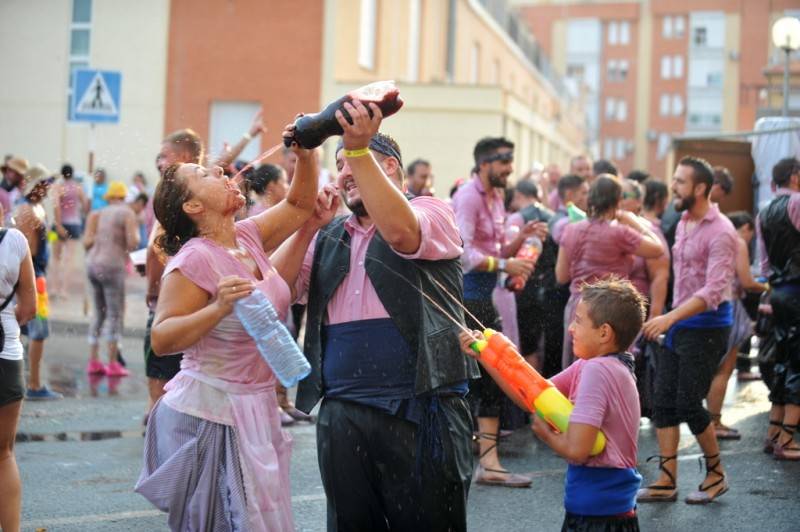 The importance of wine is perhaps best illustrated by the spectacular August fiestas of the “Vendimia” (start of the grape-picking season) in Jumilla, where the centrepiece is the Cabalgata in which thousands of revellers are drenched in red wine!
The importance of wine is perhaps best illustrated by the spectacular August fiestas of the “Vendimia” (start of the grape-picking season) in Jumilla, where the centrepiece is the Cabalgata in which thousands of revellers are drenched in red wine!
- The magical mountain of Monte Arabí in Yecla
In the north of Yecla, close to the boundary between Murcia and Castilla-La Mancha, history is written not in manuscripts or documents but in the rocks themselves, making the slopes and unique rock formations of Monte Arabí an experience unlike any other.
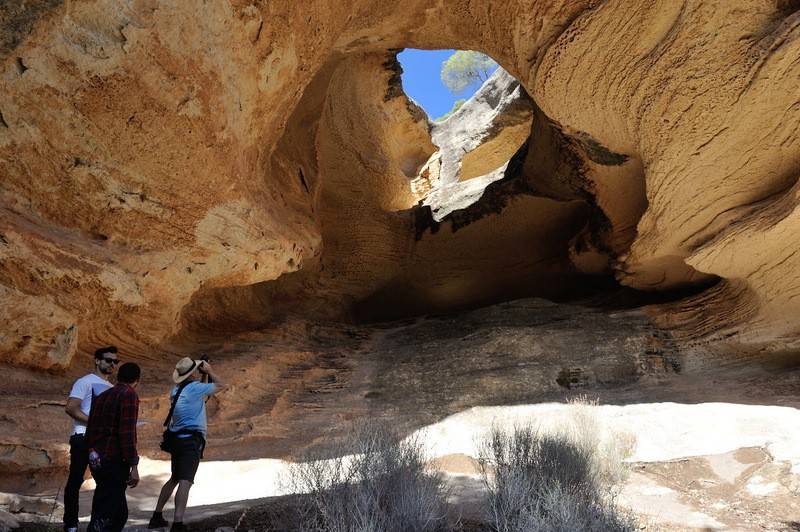 Prehistoric cave paintings at Monte Arabí have been catalogued as World Heritage by UNESCO, and equally fascinating (and unfathomable) are the mysterious “petroglyphs”, small round sculptures carved into the rocks which may, or may not, have been used in sacred rituals, for collecting water, as a kind of map… no-one really knows.
Prehistoric cave paintings at Monte Arabí have been catalogued as World Heritage by UNESCO, and equally fascinating (and unfathomable) are the mysterious “petroglyphs”, small round sculptures carved into the rocks which may, or may not, have been used in sacred rituals, for collecting water, as a kind of map… no-one really knows.
All visitors are welcome to explore this timeless scenery at their own convenience, although in order to see the primitive rock art it is necessary to register on one of the guided tours which have been granted access to the sheltered sites.
- The Monastery and Sierra of Santa Ana in Jumilla
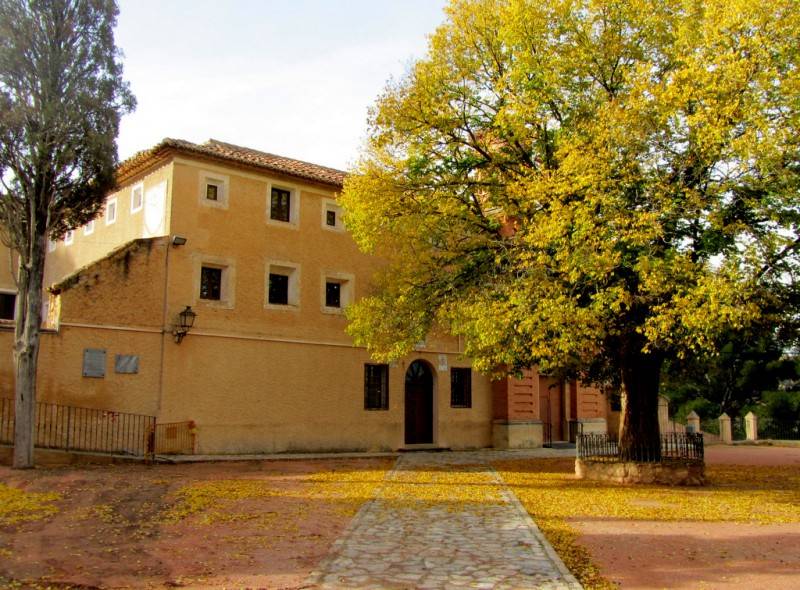 The Monastery, Sanctuary or Convent of Santa Ana del Monte stands high up in the mountains to the south of Jumilla, affording excellent views out over the town and further, and although it is a site of religious importance and the building houses an impressive religious art collection it is now visited chiefly by walkers and cyclists.
The Monastery, Sanctuary or Convent of Santa Ana del Monte stands high up in the mountains to the south of Jumilla, affording excellent views out over the town and further, and although it is a site of religious importance and the building houses an impressive religious art collection it is now visited chiefly by walkers and cyclists.
And it’s not hard to understand the popularity of the location, shaded by abundant woodlands and with spectacular views towards Jumilla castle. This may have been one of the factors which led to the monastery’s construction in 1574 (although it was already a site of religious worship over a century beforehand), and almost certainly it contributed to the existence of the Iberian settlement of Coimbra Ancho, the 2,000-remains of which can still be seen nearby.
On top of which, the picnic area is a perfect spot to begin a hike through the mountains of Sierra Ana, with numerous routes giving opportunities to see the flora and fauna of the area, including the numerous Aleppo pines and animals such as the peregrine falcon and the golden eagle. The museum of the monastery even contains one of a pair of bearded vultures who lived in the mountains until the mid-20th century!
- Hilltop castles and sanctuaries
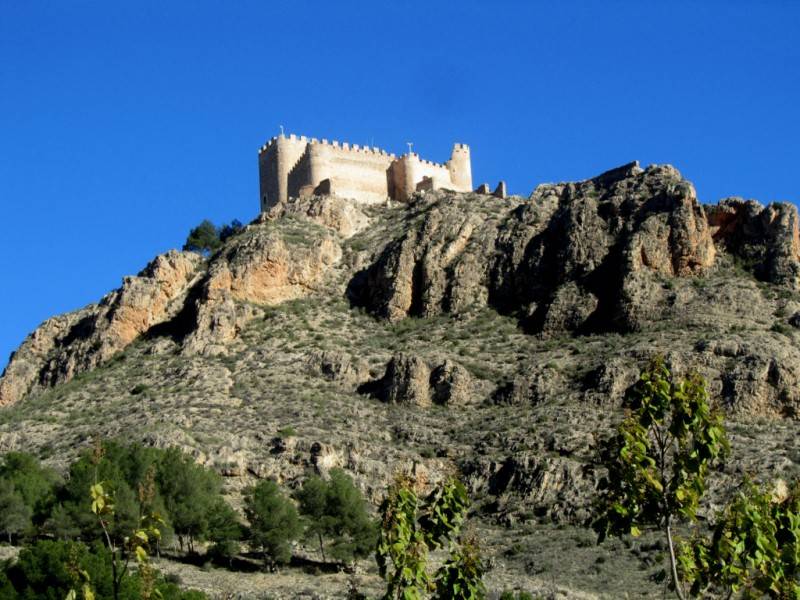 When Murcia was a frontier region between the Christian kingdoms of Aragón and Castille, in the Late Middle Ages, fortifications were built throughout the Region to protect the land against raiders, and when local rulers and royal delegates were deciding on how to protect themselves the main consideration they took into account was similar to that of many of those who buy holiday homes in the Costa Cálida today: location, location and location!
When Murcia was a frontier region between the Christian kingdoms of Aragón and Castille, in the Late Middle Ages, fortifications were built throughout the Region to protect the land against raiders, and when local rulers and royal delegates were deciding on how to protect themselves the main consideration they took into account was similar to that of many of those who buy holiday homes in the Costa Cálida today: location, location and location!
This was certainly on the mind of Juan Pacheco, the first Marquis of Villena, when he ordered the construction of Jumilla castle in 1461, and despite having undergone extensive renovation in recent years the castle is, in many ways, everything one might expect of a medieval fortress: it stands in a position of dominance high on a hilltop above the town, it commands panoramic views over the surrounding area, it has an imposing keep four floors high with crenelated battlements and it generally gives the impression of being close to impregnable.
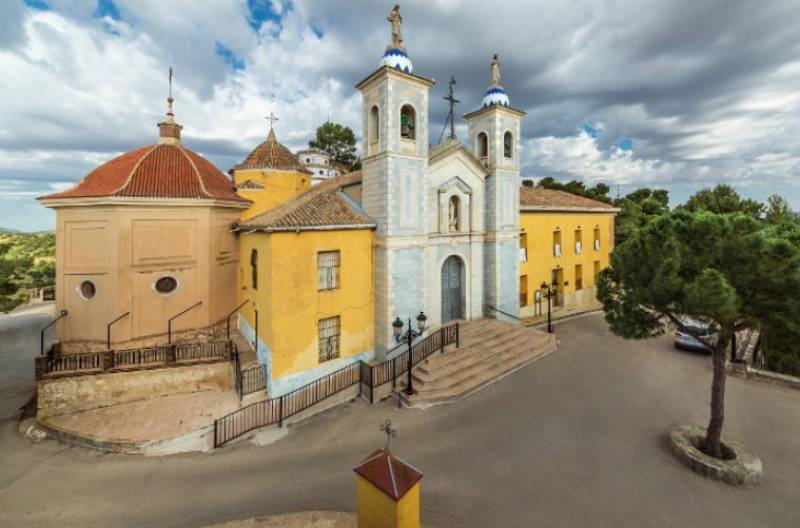 To give an idea of the military importance of the passage across the Altiplano between the mountains, it is even said that Hannibal marched his army, complete with elephants, along the route when he set out from Cartagena on his attempt to overthrow Rome!
To give an idea of the military importance of the passage across the Altiplano between the mountains, it is even said that Hannibal marched his army, complete with elephants, along the route when he set out from Cartagena on his attempt to overthrow Rome!
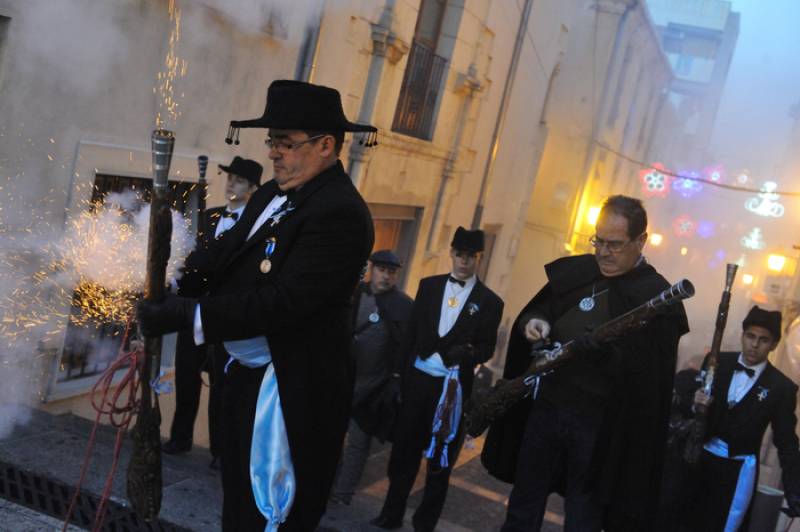 The castle of Yecla occupied a similar position on the hill which looks over the town, but only the most basic of remains can be seen today. In its place, though – well, around 100 metres way – stands the sanctuary of the Virgen del Castillo, a fundamental part of the identity of the Yeclanos and the hub around which the annual fiestas revolve, complete with the acrid smell of gunsmoke (!) every December.
The castle of Yecla occupied a similar position on the hill which looks over the town, but only the most basic of remains can be seen today. In its place, though – well, around 100 metres way – stands the sanctuary of the Virgen del Castillo, a fundamental part of the identity of the Yeclanos and the hub around which the annual fiestas revolve, complete with the acrid smell of gunsmoke (!) every December.
- Monumental churches
Every bit as important as military fortification in the Altiplano area is the central role played in its history by the Catholic faith, and it goes without saying that both Jumilla and Yecla boast a large number of churches, many of them hugely impressive.
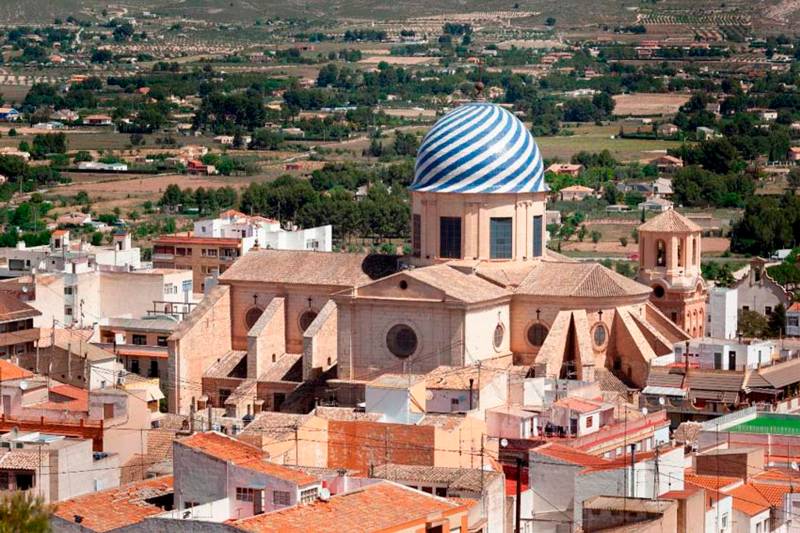 In Yecla the pride of place goes to the Basílica de la Purísima, although the Iglesia de La Asunción (or “Iglesia Vieja”) is arguably of more interest to historians and has the advantage of being alongside the magnificent Plaza Mayor (also home to the Town Hall and tourist office).
In Yecla the pride of place goes to the Basílica de la Purísima, although the Iglesia de La Asunción (or “Iglesia Vieja”) is arguably of more interest to historians and has the advantage of being alongside the magnificent Plaza Mayor (also home to the Town Hall and tourist office).
In Jumilla the main church is the Iglesia Mayor de Santiago, where although construction began as early as the 15th century the truth is that it could still be viewed as “work in progress” until well into the 19th. As a result, it contains a compendium of different architectural styles and the dome over the chapel was the first of its kind in the Region of Murcia. The Iglesia del Salvador is also worth a visit and the tower of the old church of Santa María del Arrabal is a reminder of the previous parish church.
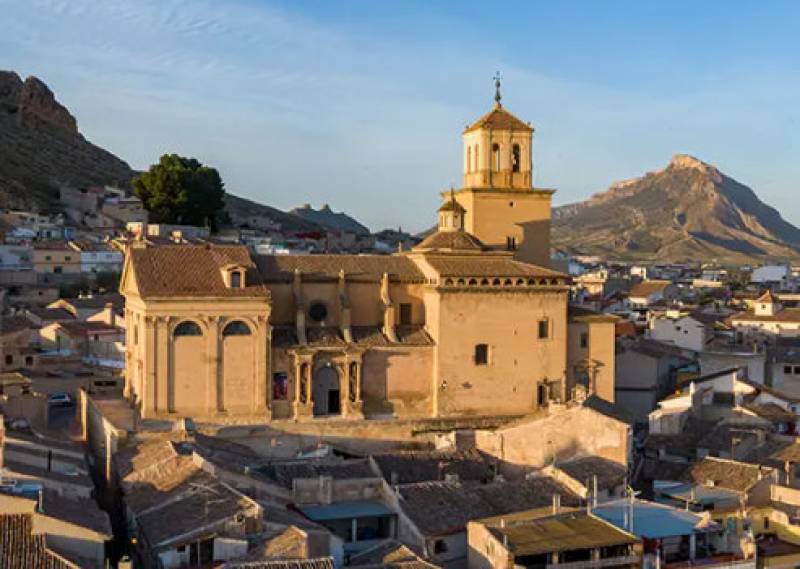 But to truly appreciate the importance of religious faith in Jumilla it is necessary to witness the Semana Santa (Easter Week) processions. Dating back at least 600 years, they are among the oldest in Murcia and are characterized by their rich artistic heritage, colour and the devotion and enthusiasm they inspire.
But to truly appreciate the importance of religious faith in Jumilla it is necessary to witness the Semana Santa (Easter Week) processions. Dating back at least 600 years, they are among the oldest in Murcia and are characterized by their rich artistic heritage, colour and the devotion and enthusiasm they inspire.
- Pre-history and archaeology
The Altiplano is one of those parts of Spain which has so much historical and pre-historic heritage that it’s hard to know what o do with it all!
As a result, the local historical and archaeological museums (named after Jerónimo Molina in the Plaza de Arriba in Jumilla and Cayetano de Mergelina in Yecla) are real treasure troves, with exhibits dating from well before the birth of Christ to the Moorish Middle Ages and the modern era.
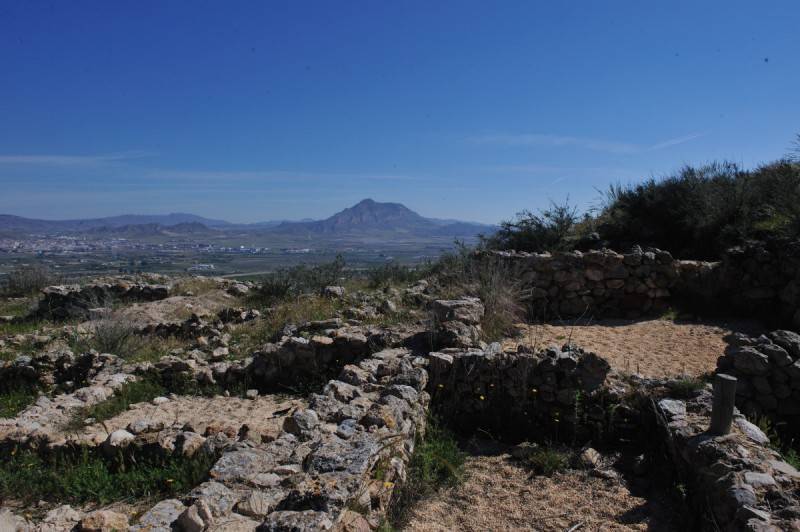 Apart from these, there are plenty of actual archaeological sites to be visited, the highlights being that of Coimbra Ancho in the mountains of Santa Ana (Jumilla), the cave paintings of Monte Arabí in Yecla, the Roman ruins of Los Torrejones, and even the fossilized footprints of sabre-toothed tigers and other animals which lived in the Sierra de las Cabras 7 million years ago!
Apart from these, there are plenty of actual archaeological sites to be visited, the highlights being that of Coimbra Ancho in the mountains of Santa Ana (Jumilla), the cave paintings of Monte Arabí in Yecla, the Roman ruins of Los Torrejones, and even the fossilized footprints of sabre-toothed tigers and other animals which lived in the Sierra de las Cabras 7 million years ago!
And in terms of documented history, the buildings of the two old town centres are themselves witness to the society of Spain during the Middle Ages and the pre-Modern era – the old town squares really are steeped in history!
- The countryside, cuisine and warm welcome of the Altiplano
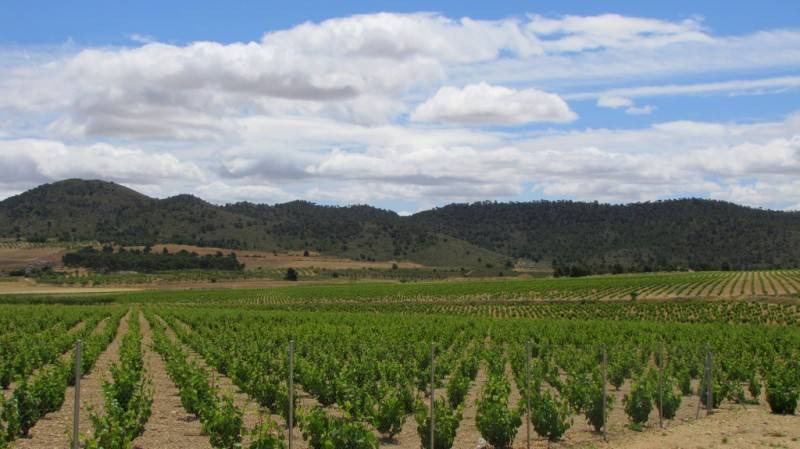 The accumulation of centuries of history is the unique identity of the people of the Altiplano, and apart from the warm welcome invariably extended to visitors this is amply apparent in both the rural settings and the comfort of central bars, taverns and restaurants.
The accumulation of centuries of history is the unique identity of the people of the Altiplano, and apart from the warm welcome invariably extended to visitors this is amply apparent in both the rural settings and the comfort of central bars, taverns and restaurants.
Small villages and rural accommodation establishments are scattered throughout the countryside both in Yecla and in Jumilla, and for those who enjoy the outdoor life there Is a wide range of hiking and walking opportunities. The mountains of Sierra del Carche provide a stiff test for the fitter visitor, while the lower slopes and those of Monte Arabí are rather more accessible, and in Yecla there is even a short route of wooden walkways on the hill atop which the Sanctuary of the Virgen del Castillo.
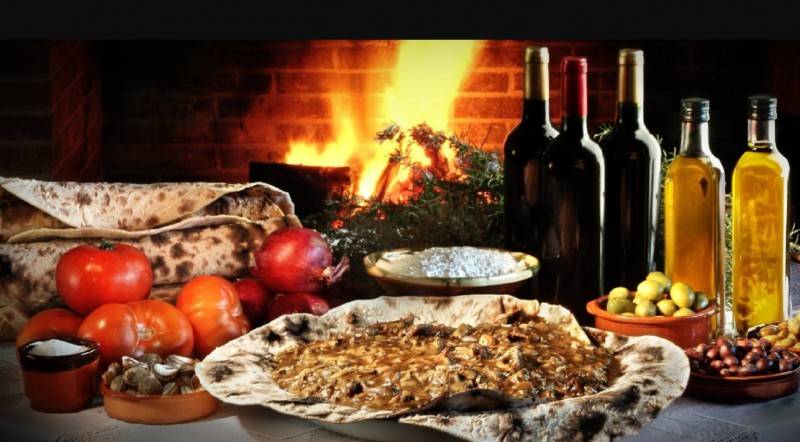 Of course, all this healthy walking (or cycling) whets the appetite, and the cuisine of Yecla and Jumilla features a number of nourishing stews and other dishes which have helped the locals survive and even thrive during the (sometimes harsh) winters over the centuries. These may not appeal to those who flock to the Costa Cálida during the summer, but the rapid motorways which link the Altiplano to Murcia, Alicante and Valencia mean that these days there is a constant supply of fresh fish and seafood to complement the locally sourced meat and vegetables!
Of course, all this healthy walking (or cycling) whets the appetite, and the cuisine of Yecla and Jumilla features a number of nourishing stews and other dishes which have helped the locals survive and even thrive during the (sometimes harsh) winters over the centuries. These may not appeal to those who flock to the Costa Cálida during the summer, but the rapid motorways which link the Altiplano to Murcia, Alicante and Valencia mean that these days there is a constant supply of fresh fish and seafood to complement the locally sourced meat and vegetables!
Those same motorways, of course, serve to bring this area within an hour and a half of almost everywhere on the coastlines of Murcia and Alicante – what’s your excuse for not making the trip and discovering the area for yourself?
Yecla tourist office
Address: Plaza Mayor s/n, Casa de los Arcos, 30510 Yecla
Email: turismo@yecla.es
Jumilla tourist office
Address: Plaza del Rollo, 1, 30520 Jumilla
Telephone: 968 780237
Email: turismo@yecla.es





































